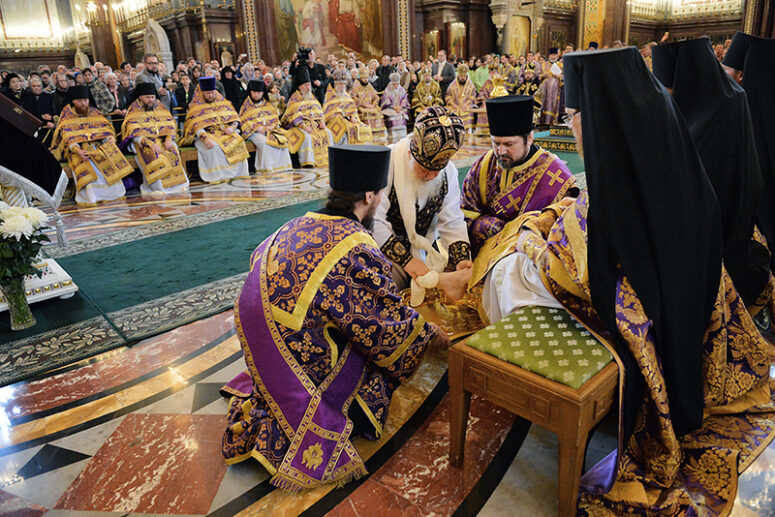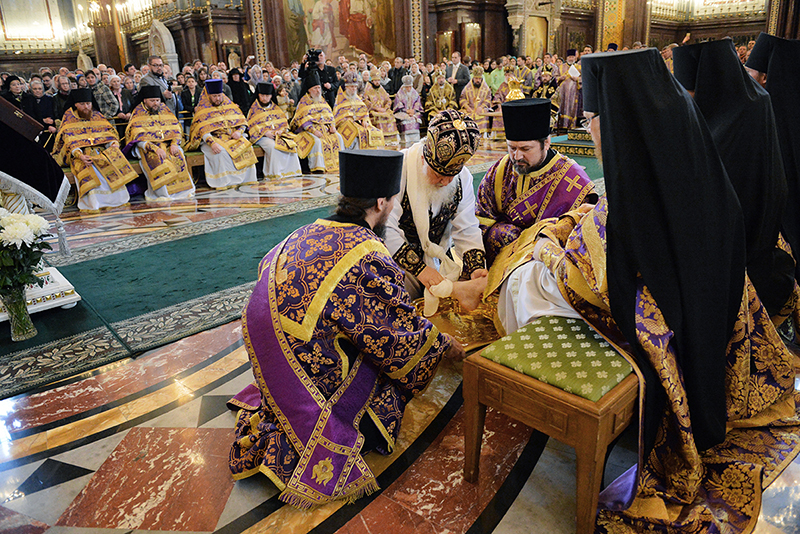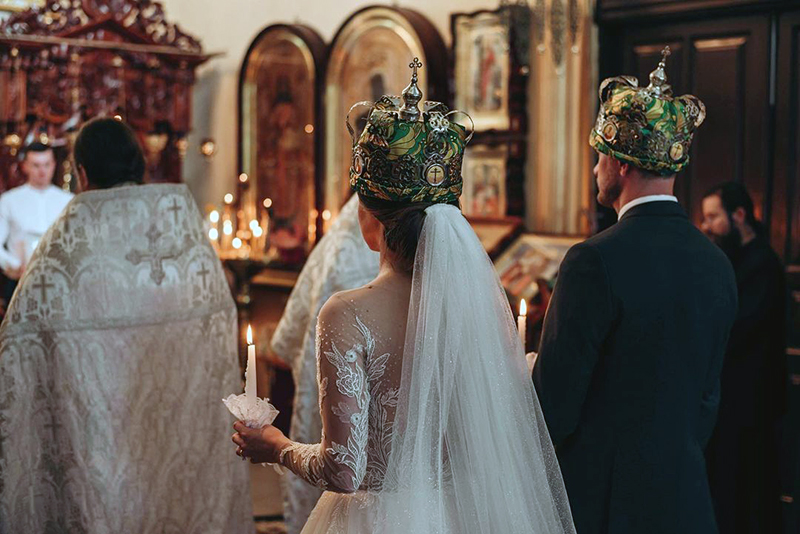
According to the common belief, the rite of the washing of the feet, performed on Maundy Thursday, originated in Jerusalem in the 6-7 centuries. Its goal was to enrich the worship of the Passion Week.
The earliest source describing this rite is a Georgian translation of the ancient Jerusalem Lectionary. According to it, the rite was performed immediately after the liturgy on Great Thursday and included a reading from the Gospel (John 13.3-30), a litany, a prayer, the washing of the feet and an Ypakoe troparion.
Around the 8th century this rite came into practice in Constantinople, where it was first performed before- and later – after the liturgy. The rite included a litany, two opening prayers (including one prayer with the bowing of the heads) and a Gospel reading. During the reading, the Priest washed the feet of 12 priests or monks. In ancient Constantinople, the Patriarch washed the feet of 3 subdeacons, 3 deacons, 3 priests, 2 metropolitans and 1 archbishop.
The rite of the washing of the feet came to the Orthodox Church of Russia from Constantinople. However, in the 20th century it became optional until
2009, when his Holiness Patriarch Kirill of Moscow and All Russia performed this rite for the first time in the modern history of the Russian Orthodox Church. Emulating the actions of Jesus Christ, Vladyka washed the feet of 12 seated priests, thereby showing his humility and service to the people of God. In modern practice, the rite has been supplemented with some hymns of Maundy Thursday and the closing prayer.




